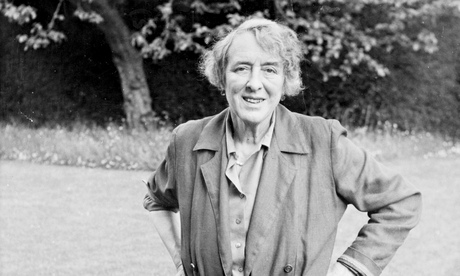
You might be forgiven for wondering whether we need another book on Sissinghurst. It is only five years since Adam Nicolson, grandson of Harold Nicolson and Vita Sackville-West, produced Sissinghurst: An Unfinished History. That beautifully written meditation was underscored by a crusading practical anxiety; a resolve to bypass the danger of the National Trust-owned estate (where he and his family still live) continuing as no more than an exhibit by giving it living purpose with a working organic farm and a restaurant and shop selling home-grown produce.
This new book by his wife, the gardener and writer Sarah Raven, is a companion piece but not a sequel – and it is, unexpectedly, a joy. If his was a book involving edgy disquiet, hers is about beauty, enjoyment, celebration of making – everything that good gardening ought to be. Its atmosphere is as consoling as sun-warmed brick. It is fastidiously illustrated by beautiful photographs old and new. Raven believes, justifiably, that a dynamic past can instruct the present and her book is a bid to see that Vita's thinking is not stilled. About the progress of her husband's project, she is silent.
This book leans on – and quotes extensively from – the Observer gardening columns that Vita produced, from her Elizabethan tower, between 1946 and 1961. She wrote with sympathetic ardour about plants and much breezy, witty, affectionate personification. It is sometimes as if she were composing character references, recommending plants for positions in her readers' gardens. "May I put in a good word for dill?" Or of old roses: "They load the air with the true rose scent… Have I pleaded in vain?" Of Jasminum polyanthum: "I hope I have said enough to stir temptation." Usually, she has.
Raven defines Sissinghurst's earliest atmosphere as "romantic unknowability" and profusion. Vita advised: "Always exaggerate rather than stint." Why plant one lily when 600 would do? Yet, at the same time, she had a miniaturist's eye, arguing that bigger seldom meant more beautiful. It is a book full of vision and practical knowledge and a miscellany of diverting titbits. (Pheasants feed on fritillaries. It is good to dissolve an aspirin in a vase of cut flowers. A "tussie-mussie" means a tiny bouquet.) Almost none of it is old hat. But best of all is the dashing abundance of plant ideas. The book is skilfully organised into sections on shrubs, roses, scents, container plants… I now plan to grow Tweedia caerulea in a verdigris pot, Helleborus niger as a houseplant at Christmas, and to introduce the incense plant Humea elegans into my life.
What is lovely about Vita's writing is that she is not a know-it-all, nor officiously bossy as some garden writers are. She is relaxed, generous and playful, wanting to share delight while undeceived about slog. (Of pruning Bourbon roses: "How easy to say and how scratchy to do.") And she can be funny. I loved her account of the vicar whose tediously exquisite orchids made his rivals groan at the competitions he invariably won.
Sarah Raven proves a most graceful chaperone, chiming in, amplifying and only occasionally updating – delivering, for instance, the bad news about lily beetles, alien invaders that were no threat in Vita's day. The private lives of Harold and Vita and their affairs are barely mentioned (quite properly as they have been written about extensively elsewhere) but Raven shows the garden itself as the portrait of a marriage: Harold in charge of form, Vita of content.
There are no more than occasional hints at life beyond the garden, although Raven relates that Vita at Sissinghurst, which she bought in 1930, became increasingly less sociable, preferring to see people one-to-one. Presumably the garden, a non-stop party in its own right (she describes one plant, Callicarpa, as determined to hang out with others of its kind because it "enjoys a party"), was at least partly responsible. In 1957, in a letter to a persistent Observer reader, a "gentleman" from Sussex who accused her of being an armchair gardener, she describes how Sissinghurst's garden consumed her: "For the last 40 years of my life I have broken my back, my fingernails, and sometimes my heart, in the practical pursuit of my favourite occupation."
This declaration is later echoed by heartbreak of a different kind – Harold's, after her death: "Visitors would see him sitting on the Tower Lawn with tears running down his cheeks." His son, Nigel, was "awed by his desolation". Sissinghurst was no longer the place Harold had once written about where, unobserved, you could quietly "read the Sunday papers while sipping China tea". And 80 years on, however conscientiously and knowledgeably maintained, it continues to face the challenges of a posthumous garden with no private life. Whatever Sissinghurst's future, this book and Vita's ideas will inspire and, if you are even half a gardener, have you reaching for your gardening gloves with new purpose.

